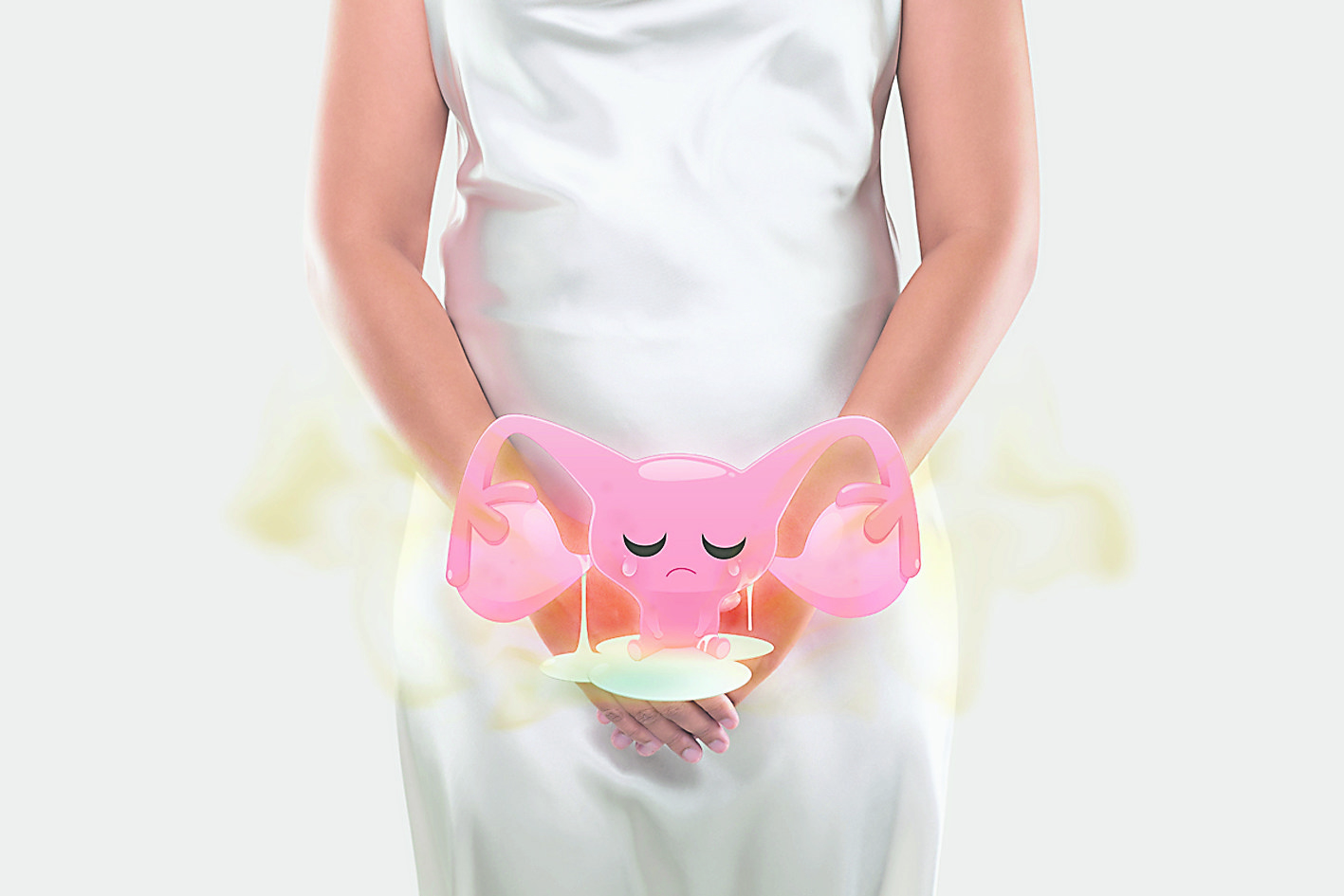[Local medical care]Reddish brown or precancerous lesions of miscarriage can be seen from the color of leucorrhea
![[Local medical care]Reddish brown or precancerous lesions of miscarriage can be seen from the color of leucorrhea [Local medical care]Reddish brown or precancerous lesions of miscarriage can be seen from the color of leucorrhea](https://webcdn.guangming.com.my/wp-content/uploads/2023/05/zz1-11-780x420.jpg)
Text: He Jianxing Organizer: Liang Yingxiu
The leucorrhea problem has always driven many women crazy. From the time of grandmothers to mothers, they all agreed that excessive leucorrhea is due to health problems or hidden diseases.
In fact, leucorrhea can be divided into two categories: normal and abnormal. As long as you know more about the changes in your body, you can check your health.
Dr. Chen Xinyi
(Dr Tan Sing Yee)
(Kuala Lumpur News) Every woman will secrete leucorrhea from small to large. It is a vaginal secretion, and its main component is the mucus secreted by the glands formed by the columnar epithelial cells in the cervix and cervical canal.
In addition, leucorrhea also includes mucus exuded from the endometrium and vaginal mucosa, exfoliated epidermal cells from the cervix and vagina, as well as a small amount of white blood cells, vaginal resident flora and their metabolites, etc. It can be seen that the amount of leucorrhea depends mainly on the cervix. , Secretory and exudative functions of endometrium and vaginal mucosa.
Leucorrhea against foreign pathogens
Since leucorrhea is a normal discharge, why do some women go crazy about it, complaining “Why do I always have leucorrhea and it comes so much”, “Why is my leucorrhea sticky”, or “Why does it smell weird? “, Is there a hidden disease or something wrong with health?
Dr Tan Sing Yee, a consultant in family medicine, pointed out that both baby girls and adult women will have leucorrhea, but the amount and nature are slightly different. Before puberty, the ovaries have not “awakened”, so some girls are There is no leucorrhea, ovulation begins after the ovarian function is fully developed, and there is a leucorrhea with the secretion of estrogen.
“Normal leucorrhea is vaginal discharge, which does not cause itching in the lower body. Usually, the amount of leucorrhea is small and sticky after menstruation is clean. The vaginal discharge will increase during ovulation. At this time, the leucorrhea becomes thin and transparent. The textbook also explains , You can predict the ovulation period through the consistency of the leucorrhea.”
She said that leucorrhea also acts as a lubricant, helping women achieve lubricating effects during intercourse. There are a large number of white blood cells and vaginal resident flora in leucorrhea, these ingredients mainly play the role of “security”, they will make the vagina form a stable, harmonious and balanced internal environment, thus resisting the invasion of foreign pathogens.
“After understanding the function of normal leucorrhea, we must further understand abnormal leucorrhea. As the name suggests, leucorrhea is transparent or white, which is normal, but if other colors appear, such as yellow, blue, red, brown, pink or gray-black, etc., even If it is white like bean curd residue, you must pay attention, or it may be a harbinger of some diseases.”
“Let’s talk about white first. If it is transparent white, you don’t need to worry too much. But if it looks like bean curd residue or is described by some people as cheese (cheesecurb), it may be fungal vaginitis (candidiasis). Its formation is related to poor personal hygiene habits. Related to, or pregnancy, large-scale use of antibiotics or diabetes, etc., the obvious symptoms include restlessness, itching, redness, swelling and heat pain, frequent urination and urgency, or the feeling of endless urination. Patients must seek medical treatment for treatment. “
“If it is yellow leucorrhea, it is likely to be a patient with trichomonia sis. The formation factor is transmitted through sexual intercourse. The patient’s secretion will be yellow-green, with bubbles and a rancid smell. The obvious symptoms include itching, pain, Burning sensation and discomfort when urinating.”
Be careful with non-menstrual bleeding
As for gray leucorrhea, which is common in patients with bacterial vaginosis (bacteria vaginosis), its formation is a condition that occurs when there is too much accumulation of specific bacteria in the vagina, which will change the normal bacterial balance in the vagina, and the patient’s discharge will be grayish white at this time And with a fishy smell, the patient’s symptoms will be more obvious after intercourse or menstruation, often accompanied by mild genital itching and burning sensation.
“The most worrisome thing is a red or brown leucorrhea,
Because there are all kinds of problems hidden behind it, people cannot make a clear judgment.
The formation factors may be bleeding after sex, bleeding during ovulation,
Cervical lesions, cervical polyps, endometrial lesions, endometrial polyps, threatened abortion, ectopic pregnancy, etc. “
She reminded that once you bleed during non-menstrual period and the blood color is bright red, you must not take it lightly, and you need to see a doctor or consult a doctor as soon as possible. “As for postmenopausal women, if a similar situation occurs, it needs to be highly suspected that it may be the possibility of malignant diseases such as cervical cancer or uterine cancer.”

Women’s monthly “essentials” 8,000 pieces of sanitary napkins are used in a lifetime
According to normal calculations, a woman will have 400 menstrual periods in her life. If she needs to use 20 sanitary napkins for each menstrual period, in other words, she will use about 8,000 sanitary napkins in her lifetime.
But because I don’t know much about this monthly “necessity” or pay more attention to it, the sanitary napkins I buy can’t always allow myself to “enjoy” during menstruation.
Chen Xinyi said that with the advent of the era of equality between men and women, more and more men are now willing to take the initiative to buy sanitary napkins for their female partners. right?
Choosing the right sanitary napkin is more secure and comfortable
Here are some suggestions, hoping not only for women but also for men to know how to buy the right sanitary napkins.
1. Absorbency
According to a study by the Japanese brand Kao, sanitary napkins can increase the humidity of women’s lower body by 85%. Men only need to imagine covering their lower body with a piece of cloth on a hot day, and then rubbing it constantly when walking and sitting. No matter how uncomfortable the stuffy feeling is, you can understand the importance of absorption capacity.
Choose a sanitary napkin with strong absorption capacity to reduce the feeling of dampness, and the strength of the absorption capacity is related to the mesh surface of the sanitary napkin. The cotton mesh surface is made of spunlace non-woven fabric, which penetrates liquid quickly and is softer and more sensitive to allergies Less sexual, suitable for women with sensitive skin.
Another kind of mesh surface is perforated film, also known as dry mesh surface, which is made of polyethylene film with small holes. After the liquid enters the lower layer through the small holes, it is not easy to return, so the skin will be drier, but it must be noted Yes, this mesh is more allergenic.
In addition, the design of the diversion grooves and diversion strips can also allow the liquid to reach the mesh surface, first evacuate to all directions of the plane through the concave diversion, and continue to penetrate into deeper layers to keep it dry quickly.
2. Length and shape
The length of daily sanitary napkins is about 17cm to 25cm, while the length of nighttime sanitary napkins is 35cm. The extended sanitary napkins can make menstruating women feel more at ease when tossing and turning at night and prevent side leakage.
The sanitary napkin with wings can prevent women from getting the sanitary napkin into the buttocks and avoiding side leakage. The thicker version is also suitable for use when menstrual flow is heavy. When the flow is light or when the menstrual flow is about to end, only use sanitary pads will be more comfortable.
3. Type and brand
Scented sanitary napkins are added with different types of drugs, flavors or additives, but this is the main cause of skin allergies. If there is damage on the skin, these allergens can also penetrate into the blood and cause infection. Therefore, it is recommended It’s best to use less or no scented tampons, no matter the brand or how good it claims to be.
Change the anti-infection every 4 to 6 hours
In addition, no matter how absorbent the tampon is, it must be replaced every 4 to 6 hours to prevent the growth of bacteria. At the same time, we should follow the civic awareness and don’t throw the tampon into the toilet to cause blockage. The correct way is to wrap it and throw it into the trash can.
Finally, you must wash your hands before changing the sanitary napkin, because the process of unpacking, opening, smoothing, and sticking the sanitary napkin by hand will bring many germs to the sanitary napkin, and the sanitary napkin directly contacts the sensitive skin. Carelessness may lead to infection.

![[Love Wants Sexual Happiness Series 358]Find the culprit and overcome psychogenic erectile dysfunction. Don’t let pressure affect your sexual happiness. [Love Wants Sexual Happiness Series 358]Find the culprit and overcome psychogenic erectile dysfunction. Don’t let pressure affect your sexual happiness.](https://webcdn.guangming.com.my/wp-content/uploads/2024/04/171111-780x420.jpg)

![[Wanqingyi Care]My health, my rights, customized medical methods in the last stage of life [Wanqingyi Care]My health, my rights, customized medical methods in the last stage of life](https://webcdn.guangming.com.my/wp-content/uploads/2024/04/ZZ1-100-780x420.jpg)
![[Kidney Transplantation Special Topic]The survival rate of transplanted kidneys is high without dialysis treatment three times a week [Kidney Transplantation Special Topic]The survival rate of transplanted kidneys is high without dialysis treatment three times a week](https://webcdn.guangming.com.my/wp-content/uploads/2024/04/1311-780x420.jpg)



